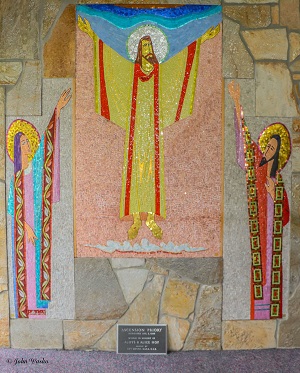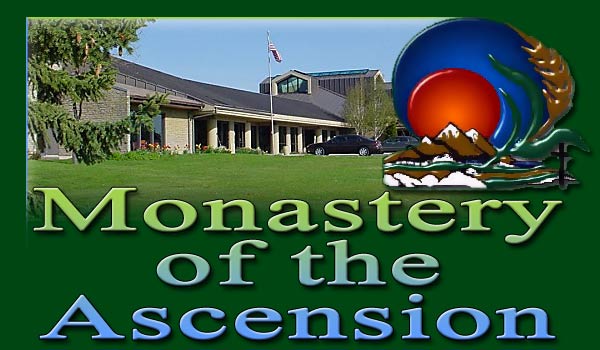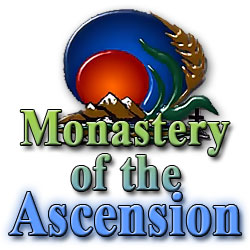A Brief History of Oblates
John J. O'Hagan
Oblates are "persons, not professed monks or friars, who have been offered to God or have dedicated themselves to His service in holy religion."1 In some form, oblates have been part of monastic life since the very early days of the church. Interestingly, the first "oblates" were children, in effect offered (the literal meaning of "oblate") to the monasteries by their parents. St. Basil in his Regulae addressed the question of acceptance of child oblates. Our own Rule of St. Benedict treats this situation at length in Chapter 59:
If a member of the nobility offers his son to God in the monastery and the boy himself is too young, the parents draw up the document mentioned above; then at the presentation of the gifts, they wrap the document itself and the boy's hand in the altar cloth . . . poor people do the same but those who have nothing at all simply write the document and in the presence of witnesses offer their son with the gifts.
It was always a troublesome question as to whether these oblates, when they came of age were free to disavow the commitment which had been made for them as infants. The Tenth Synod of Toledo, in 656 resolved the issue, and effectively ended the practice by forbidding acceptance of child oblates before the age of ten and giving the child oblate permission to freely leave the monastery if they wished upon reaching puberty.
As the practice of child oblation lost favor, oblation of the elderly coincidentally came to prominence. Lay men and women, pensioned off by royalty or nobility, when their productive days were ending, found themselves living in almshouses or other charitable institutions maintained by the monasteries. In this state they performed some work for the monastery, donned some form of monastic habit and subjected themselves to obedience to the rules of the monastery and participation in its religious observances. These persons were generally referred to as fratres oblati. There were various classes and subclasses of these oblates, often depending on the order they obligated themselves to. Some took formal vows, some did not; some wore a habit, others modified secular dress and for some a simple scapular was their only distinct accouterment. Almost without exception, however, the prime distinction between these oblates of the 5th through 12th century and oblates of today was that these early oblates lived at the monastery from the day of their oblation until death.
In the middle ages, devout lay persons seeking and living significant spiritual lives, attached themselves to monasteries as oblates. One of these, St. Frances of Rome (A.D. 1384 –1440) could serve as an exemplar for oblates today. Frances was married and had a large family. She formed a community of oblates associated with the monks of nearby St. Maria Nuova monastery. The oblates devoted themselves to acts of mercy and charity, but they were also deeply contemplative. After the death of her husband, who had come to accept and admire her dedication, Frances devoted herself to the care of the sick. Despite ups and downs, oblation has continued to the present day as a meaningful service to God and to the church. Oblates have ranged from persons serving as little more than vassals to a monastery to lay persons forming their own communities independent of a monastery. The history of oblation has generally mirrored the waxing and waning fortunes of the monasteries. Benedictine oblates were numerous in Europe until the late 1700's.2 With the revival of monasticism in the 19th century there came almost logically a revival of oblature. The changes and turmoil in the church after Vatican II initially saw a decline in oblature which mirrored a decline in formal religious vocations. Those same changes however, and the continuing turmoil in the institutional church, have led increasing numbers of persons to seek in oblation, a meaningful prayer life, spiritual guidance and stability. Oblation in the late 20th and early 21st century seems to be undergoing a dramatic revival. Perhaps this will be the beginning of a new phase in church life, that is, oblates beginning the trend and professed monks following.
What is it that oblates seek and what is it that they can bring to the work of God? "If one seeks a definitive common characteristic in all the vocations of (oblates) a fundamental trait is . . . always the consecration of a life of service . . . which necessarily implies for the (oblate) a spirituality founded in humility, and imitation of the hidden life of Our Lord, a certain simplicity of life similar to that of the Holy Family at Nazareth."3 If we who have been called as oblates are conscious of our history, it can serve as a reminder of the role we can play in the church and of the very important work we can bring to the world.
Bibliography on Oblates
Buchanan, Janet. Monks Beyond Monastery Walls: Benedictine Oblation and the Future of Benedictine Spirituality. Graduate Theological Foundation, D. Min. thesis, 1999. Day, Dennis, and Trisha Day. "Some Reflections on the Emergence of Cistercian Associations," Cistercian Studies Quarterly 35 (2000) 93-112. Deroux, M.-P. Les origiens de l'oblature Bénédictine (Vienne: Abbaye Saint-Martin de Ligugé, 1927). Guilmard, Dom Jean. Les oblats séculiers dans la famille de Saint Benoît (Sablé: Abbaye Saint-Pierre des Solesmes, 1975). Sauer, Ernst Friedrich. Benediktsregel und Weltleute (St. Augustuin-Hangelar: Kersting, 1980). Smith, Derek G. "Oblates in Western Monasticism," Monastic Studies, #13 (Autumn 1982) 47-72 (good bibliography on p. 48). Sutera, Judith. "The Origins of Benedictine Oblation in the Research of the Abbé Deroux," Amercian Benedictine Review, 52 (March, 2001) 34-43.


